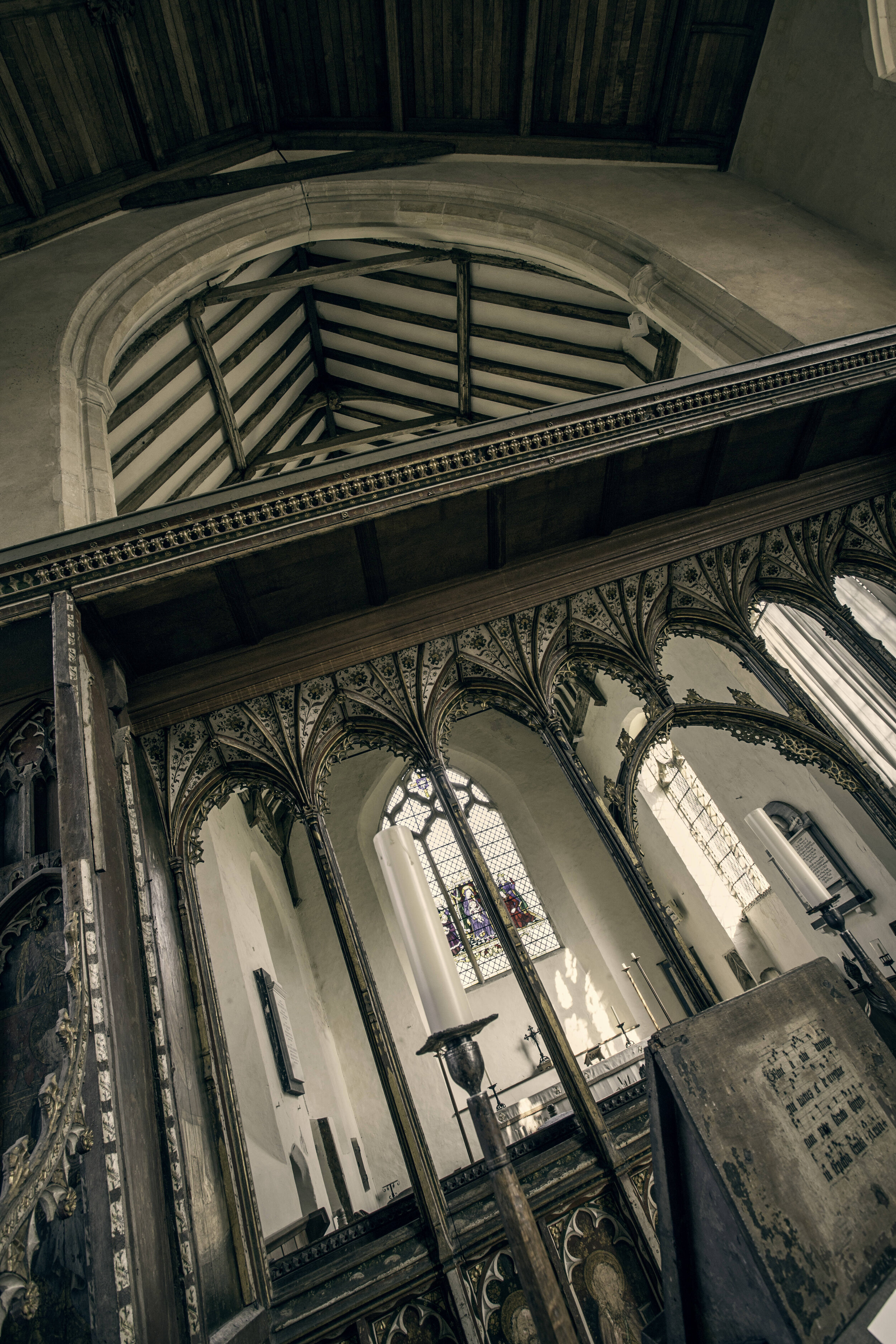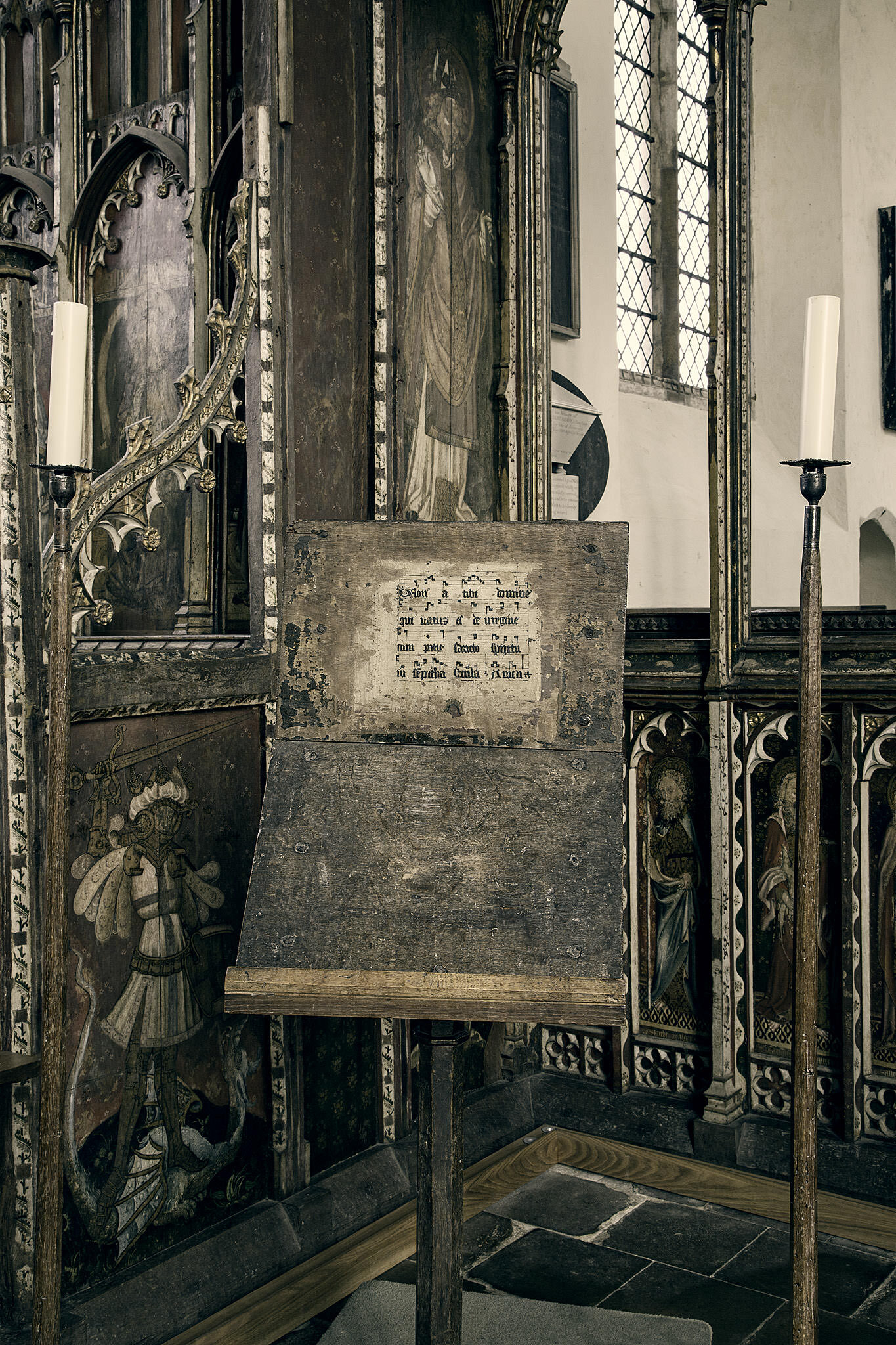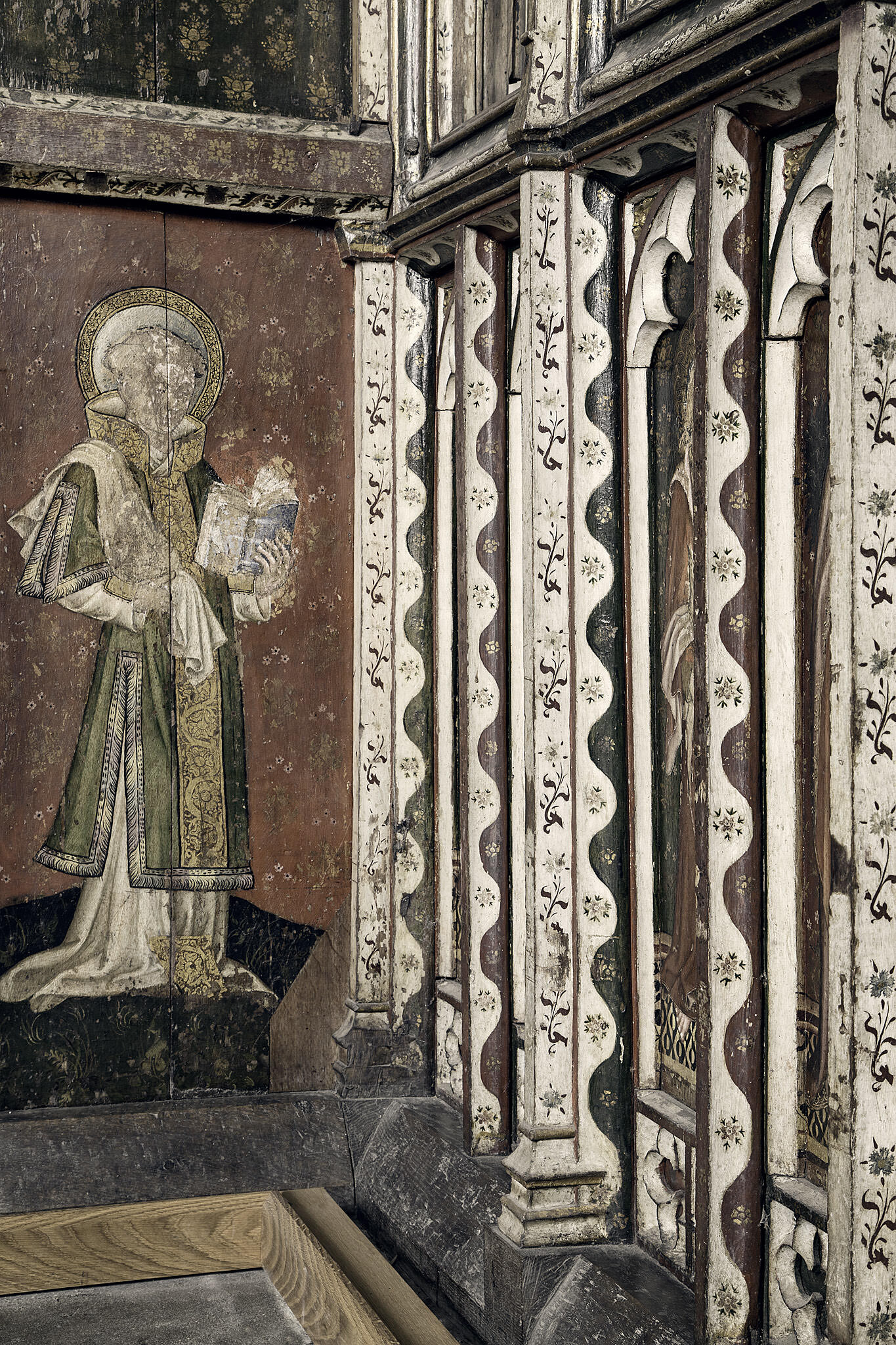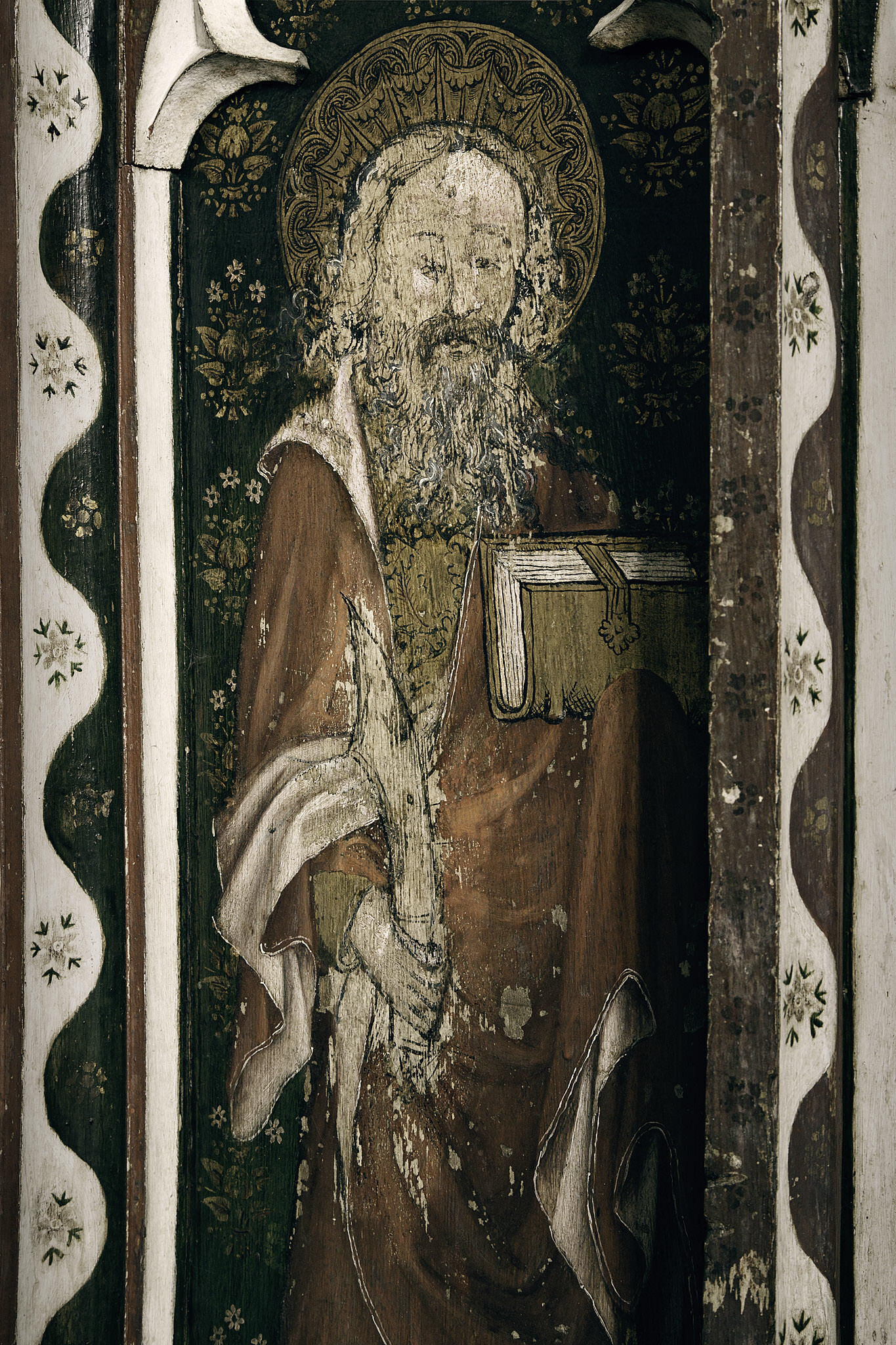Ranworth Church of St. Helen, Eastern England
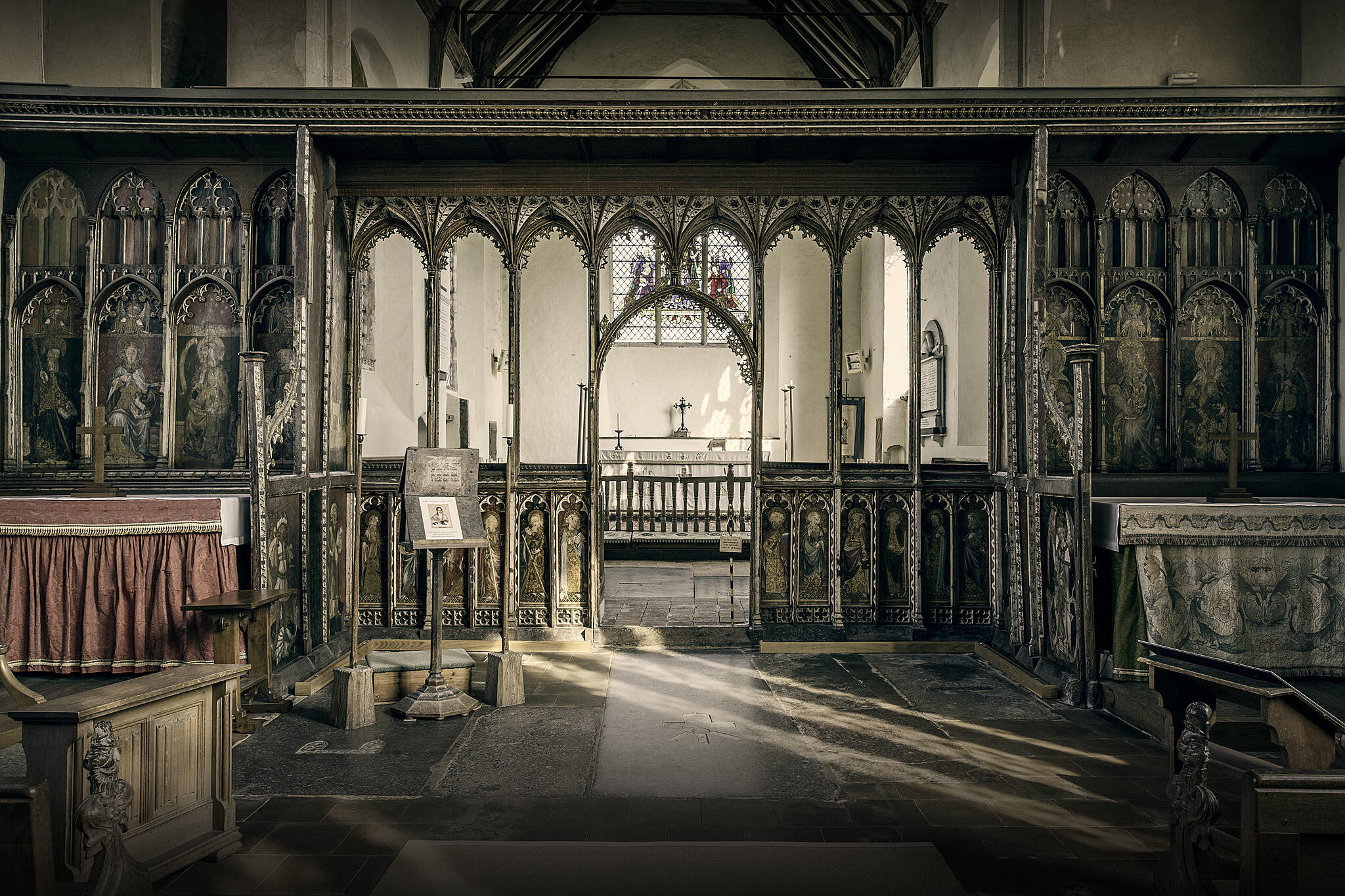
In the mid-15th Century, it was decided to rebuild the church at Ranworth. This was funded by wealthy local wool merchants. The end result was an elaborate work of art, and some of this art is still there. While it may look like any other church from the outside, it contains some objects which would not be out of place in a museum. Church enthusiasts need only travel to Eastern England, as here you will find some of the best examples of medieval church art. This was wool country in the middle ages, and the money from it built elaborate churches.
The first medieval item you come to is the font. Although not elaborate, its base is thought to be original. The font is lacking the once elaborate, steeple shaped cover that was once here, but by the 1700’s it had already been broken beyond repair. The cover, font and stone platform which it sits upon, all would once have been brightly painted.
Ranworth is very proud to still have its Antiphoner. This is the name given to the book of services, consisting of psalms and alternates, the phrases spoken between the priest, choir and congregation. In the early 15th Century, the monks of Langley Abbey held seven services every day, and recited all 150 psalms in the course of a week. The monks of Langley were also the Vicars of Ranworth. The Antiphoner is a book of services that dates from before the reformation. By 1559 however, it was mandatory that all services be in English, and so these prayer books would no longer have been used. The Antiphoner then disappeared for 300 years, only to emerge in the hands of a private collector in 1852, when it was offered to the church.
Creating the Antiphoner would have been a specialist skill, and the pages would have been set out, before the ink was used, often by pricking the position of margins and spaces with a small spiked wheel, they were then filled with beautiful lettering and music. The colours of the words alternate between red, brown and black, which would denote who spoke or sang those lines. Mistakes could not be erased in the way we are used to, but the sheepskin vellum was often thick enough for mistakes to be scratched out and smoothed over, before being rewritten. A book like this may have been a gift to the church from a wealthy patron, and its illuminations would depend upon their budget. This particular book was written for the services at Ranworth and was given to the church by John Cobbe in 1478.
While all this in itself is interesting, what we have really come to Ranworth to see, is the medieval screen. Screens in churches were a common feature and almost every church had one. They were a physical barrier which separated the peoples church in the Nave, from the sacred Chancel, which was reserved for only the clergy. This however is no ordinary screen - it may well be the finest 15th Century screen in the country. The screen not only fills the opening to the Chancel but it continues the full width of the church.
The paintings on the screen are original, but the richness of colour and attention to detail are not often seen in country churches. The paintings on the screen date to the late 15th Century. Like most figures of Saints, the faces have been scratched during the reformation, but less damage seems to have been done here than in other places. The screen was whitewashed over, however, lime being the preservation material that it is, only acted to preserve the paintings, not destroy them.
The screen was originally even larger than what survives today. Above the centre section, would have also been the Great Rood which would have displayed the crucifixion, but the reformation of the 16th Century meant that this idolatry had to be torn down. The name rood comes from the Angle-Saxon word for cross. It is thought that there was also a canopy over it, with the top gallery being used by musicians. This would have been built into the entire opening above the current screen.
The paintwork was expertly cleaned, millimetre by millimetre, in the 1960’s. No colour was replaced or added, everything here is original. The lower panels portray the twelve apostles. All the Saints carry their emblems, with their names painted beneath their image in medieval Latin. The Saints themselves are set against alternate red and green backgrounds. They are clothed in exquisite fabrics, which would have been contemporary to the 15th Century, when the paintings were created.
Identifiable animals and birds also appear in the paintings, as well as elaborate patterns. They all stand barefoot on floor tiles. Every Saint is painted distinctly and with skill, yet we have no idea who the artist, or artists were, although the screen is thought to have Flemish influences.
Depictions of Saints dominated medieval Christian art in Britain, until the time of the reformation in the early 16th Century. Who could be a Saint was controlled by the Bishops until 1170, when Pope Alexander III insisted that only the Pope could Canonise. This would also explain why there are so many early medieval Saints.
The church at Ranworth is dedicated to St. Helen, who was a popular Saint in ancient churches. There may have been 135 dedicated to her throughout England. One story tells us that she was a Princess, the daughter of King Coel, who was King of the Britons. She is thought to have been born in Colchester and is also the Patron Saint of that city. Another story tells us that she was born in York in the 3rd Century, where it is said she was the wife of the Roman General Constantius Chlorus, and mother of Constantine the Great, who became the first Christian Emperor of Rome.
The oak lectern is also original to the church, and dates from the 15th Century. Because this has two sides, one for singing and one for reading, is it technically known as a Cantor’s desk. It would have been used by a group of singers, who would stand around it to sing.
The Chancel contains six misericords, four of which are thought to have come from St. Benet’s Abbey, and date from the 1460’s. The word misericord, comes from the Latin misericordia, which means mercy. A misericord is the ledge, supported by a corbel, on the underside of a choirstall seat. This is only seen when the seat is in a tipped-up position. When in the upright position, the misericord it is not for sitting on. It is instead, leaned on in such a way as to allow a member of the clergy to take some of the weight off their feet during services, yet still remain in a standing position.
The clergy were not supposed to sit down during services but they figured out a way to make things easier, they added a small carved shelf to the underside of the choir stall so that while the seat was upright they could rest on the shelf.
In the middle ages the ledge of a misericord provided a rest which eased the physical strain of standing on one spot for extended periods. Seating in the choir was introduced in the 12th century, before that it was standing room only.
The piscina in the Chancel is also original to the church and was where the priest would wash his hands and the silver vessels used during the services.

